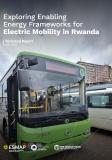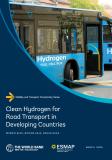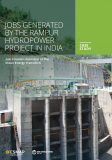Publications
In February 2003, London, the capital city of the United Kingdom (U.K.), introduced a daily congestion fee for vehicles travelling in the city’s central district during weekdays. This fee was meant to ease traffic congestion, improve travel time and reliability, and make central London more attractive to businesses and visitors.
According to analysis by the City, the program has largely met its objectives. After four years of operation, traffic entering the charge zone was reduced by 21 percent; congestion, measured as a travel rate (minutes per kilometer), was 8 percent lower; and annual fuel consumption fell by approximately 44-48 million liters or about 3 percent. These changes translated into 110,000-120,000 tons of carbon dioxide (CO2) reductions annually, a 112 ton reduction in nitrogen oxides (NOx), an eight-ton reduction in particulate matter (PM10), and some 250 fewer accidents. In terms of the program cost-effectiveness, the identified benefits exceeded the costs by more than 50 percent. In addition, the scheme brought a steady net revenue stream for transport improvements, of which 80 percent has been reinvested in improving public bus operations and infrastructure.
Among the first programs of its kind, London’s congestion charging scheme was successfully developed and implemented. The city proved to be innovative and resourceful by ensuring key elements of the scheme were in place including technical design, public consultation, project management, information campaign and impact monitoring. London’s innovation has helped other cities around the world assess this as a policy option in meeting their urban transport needs.
ESMAP. 2011. Good Practices in City Energy Efficiency: L London, United Kingdom - Congestion Charges for Urban Transport. ESMAP Energy Efficient Cities Initiative. Washington, DC: World Bank.



